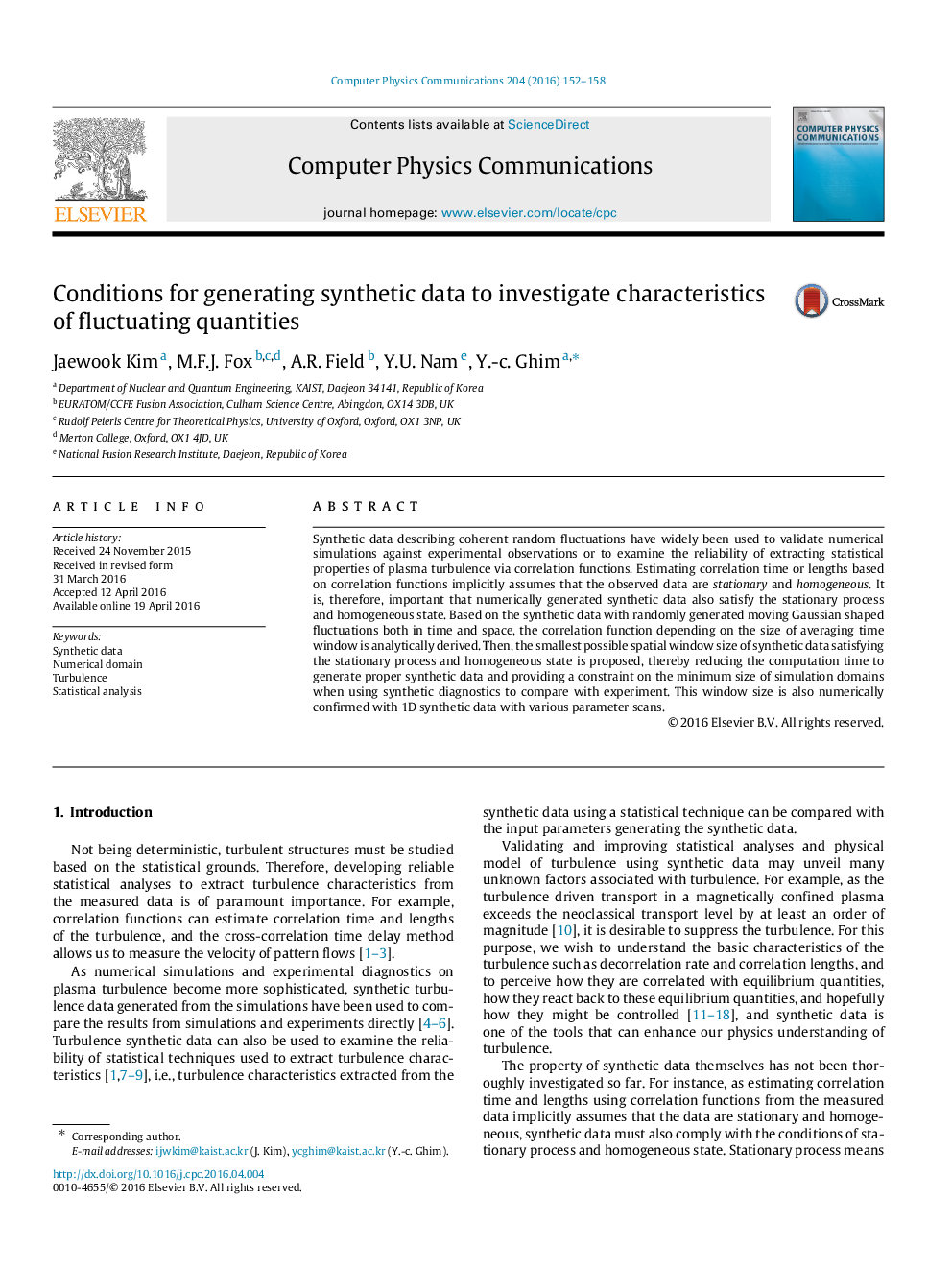| کد مقاله | کد نشریه | سال انتشار | مقاله انگلیسی | نسخه تمام متن |
|---|---|---|---|---|
| 502203 | 863688 | 2016 | 7 صفحه PDF | دانلود رایگان |
Synthetic data describing coherent random fluctuations have widely been used to validate numerical simulations against experimental observations or to examine the reliability of extracting statistical properties of plasma turbulence via correlation functions. Estimating correlation time or lengths based on correlation functions implicitly assumes that the observed data are stationary and homogeneous. It is, therefore, important that numerically generated synthetic data also satisfy the stationary process and homogeneous state. Based on the synthetic data with randomly generated moving Gaussian shaped fluctuations both in time and space, the correlation function depending on the size of averaging time window is analytically derived. Then, the smallest possible spatial window size of synthetic data satisfying the stationary process and homogeneous state is proposed, thereby reducing the computation time to generate proper synthetic data and providing a constraint on the minimum size of simulation domains when using synthetic diagnostics to compare with experiment. This window size is also numerically confirmed with 1D synthetic data with various parameter scans.
Journal: Computer Physics Communications - Volume 204, July 2016, Pages 152–158
